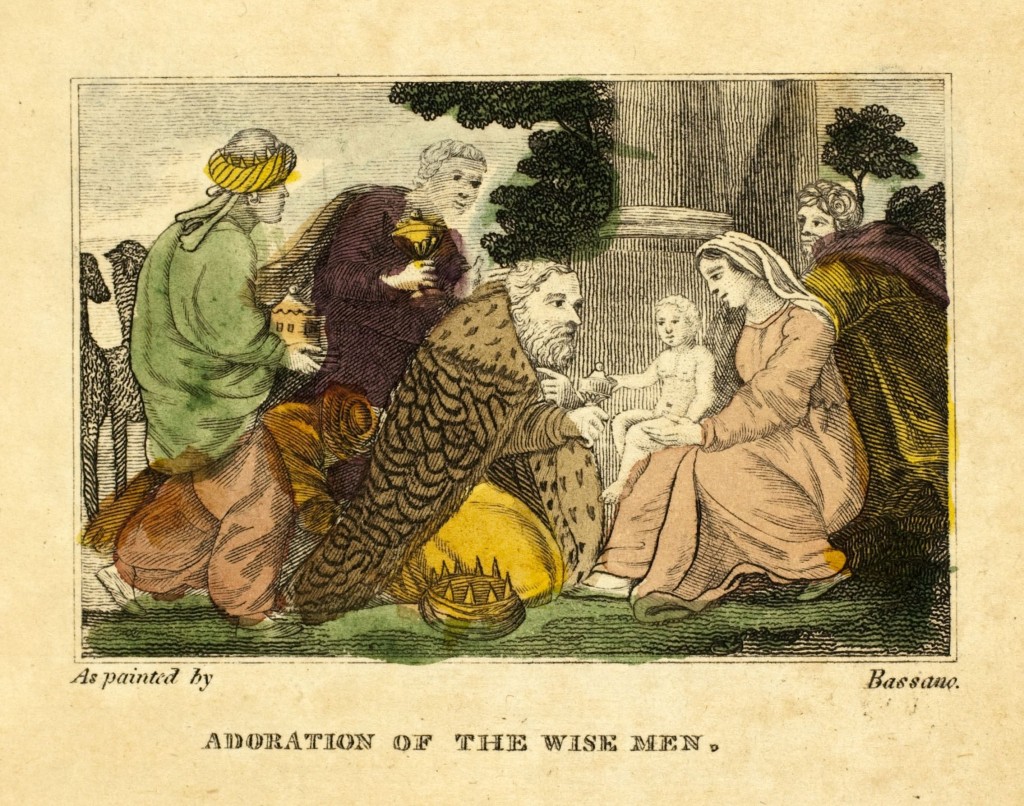If the holiday leftovers are still lurking in our refrigerators, we figure there’s still time for one more Christmas-themed post, courtesy of Curator of Children’s Literature Laura Wasowicz. The charming engraving below raises two interesting questions you might want to mull over as you finish off the pecan pie. First, where would Anderson have seen the image upon which this engraving is based? I’m guessing it was reproduced in a book or as a print he saw. Second, what is that object in front of the kneeling Magus? Perhaps it has to do with gold, frankincense or myrrh? Or is it his turban? Is it a recognizable part of the iconography of the Magi?

Fawcett, John, 1740-1817. Scripture Scenes. Cadiz, OH: H. Anderson, 1829.
This is a scarce early Ohio imprint; it is rarer still in that it contains nine hand-colored metal engravings probably executed by its publisher Hugh Anderson (1782-1866), who worked as an engraver in Philadelphia prior to his move to Ohio. Anderson based this engraving of the Adoration of the Wise Men upon a painting by the 16th-century Italian master Jacopo Bassano, shedding new light on the types of access that American children living in the Old Northwest had to Renaissance art. Purchased from David M. Lesser. Ruth E. Adomeit Book Fund.
~ Laura Wasowicz

The object in the foreground is similar to the crown/turban on one of the standing magi. It looks as if the kneeling king has removed his crown as a gesture of respect before the Prince of Peace.
Somehting of interest most Westerners don’t know is…
The term Magi denotes a follower of Zoroaster, or rather, a follower of what the Hellenic world associated with Zoroaster. That was, in the main, the ability to read the stars and manipulate the fate those stars foretold. It’s an ancient word for a practitioner of magic, astrology, alchemy and other forms of esoteric knowledge.
The Magi were the inventors of both astrology and magic, but in English, the term “magi” is more commonly connected with the Gospel of Matthew. The three wise men associated with the birth of Christ were Magi, and considered wise because they foresaw the salvation of mankind.